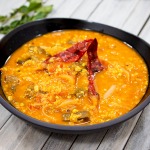
A super flavorful and easy recipe to prepare South Indian Sambar at home, with vegetables from your grocery store or garden.
This south Indian lentil recipe is vegan, gluten-free, and low-calorie friendly.
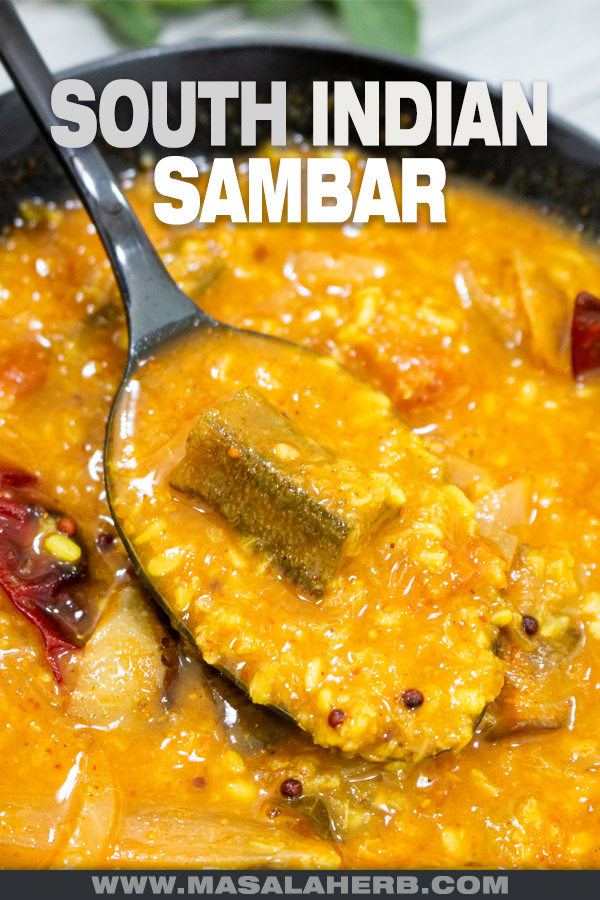

Global Food Recipes
with Spices and Herbs
Free E-Book available for a limited time. Grab yours now and get instantly inspired!
You missed out!
This recipe was filmed with Ajpa. It's also her take on Sambar, a dish she loved to prepare while she studied in Chennai, South India.
South Indian food lovers will enjoy this Shrimp Coconut Curry Recipe from Kerala.
📕 What is Sambar?
Sambar is a thin curry/stew prepared with lentils, vegetables, spices, and a souring agent.
It's a South Indian and Sri Lankan dish that is commonly served for breakfast with idli, dosa, and vada or for lunch and dinner as a curry with rice and other side dishes.
Variations exist between regions and homes, also its use depends on how sambar is prepared.
Sambar is a staple in 5 Indian states, Tamil Nadu, Kerala, Karnataka, Telangana, and Andhra Pradesh. Its origin and history are widely disputed.
The more southwards you travel in India, the more you will notice sambar. It's all over the place, but Tamil folks claim it as their own.
🧅 Ingredients
A sambar uses mainly split pigeon peas (aka Toor/Tur/Arhar Dal), or also split moong lentil or yellow split peas.
It can also include split chickpeas (chana dal). Remember variations exist, so you might spot other Indian lentil types in a sambar.
Original sambar recipes from the region use local vegetables. This usually means, drumsticks (moringa pod), bottle gourd (aka dhoodi/lauki), eggplant (aubergine), okra (aka ladyfinger/bhindi), and pearl onions (aka sambar/madras onions). Tender pigeon pea pods are also added to sambar when they are in season.
To simplify your lives, we share a way to make it with vegetables that are available in your place.
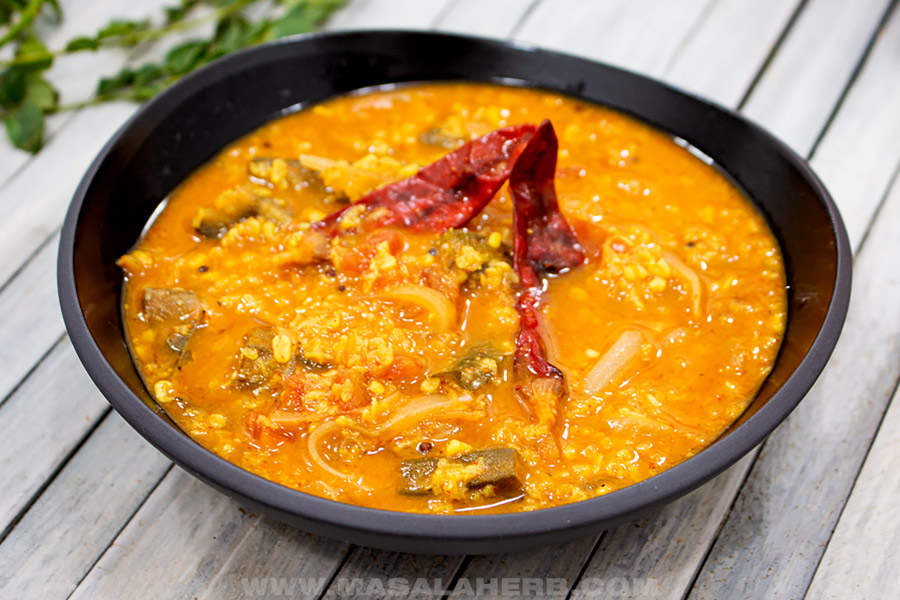
The lentils are first cooked soft.
- pigeon peas - they come dried and split in a creamy white shade. They are also called Toor dal, Tur or Arhar Dal. The word dal is hindi for lentils. OR split moong lentils - that's what we used in the video. Other varieties are not traditional but you can also try this vegetable stew with masoor dal
- salt water
- turmeric
The second step is combining the cooked lentils with the remaining ingredients.
- onion - white, yellow or purple. You can use shallots too.
- tomato or chopped tomatoes
- pumpkin - all pumpkin varieties are suitable. You can use butternut squash too.
- eggplant - aka aubergine or Brinjal in India. Any variety.
- okra
- curry leaves - fresh preferred. If you can't get fresh use dried or frozen.
- tamarind paste (or raw tamarind pulp) and hot water - water is infused with sour tamarind to create tamarind juice
- oil - mustard oil is preferred but you can use regular vegetable oil too or coconut oil or sesame oil (Note there are different types of sesame oil).
- brown mustard seeds
- asafoetida spice - aka hing. You can't substitute it and it's a must in any sambar.
- chili - dried red kashmiri chili or green Asian chili or any other chili of your choice to add heat
- red chili powder - can be cayenne too or kashmiri chili powder
- coriander seed powder
- sambar masala powder - a blend of spices
- ginger and garlic paste - can be substituted with freshly grated and finely chopped ginger and garlic. Ratio ginger: garlic is 1:2
- salt
- water
- optional jaggery (to add some sweetness)
You can also add more vegetables, such as the regional veggies to your sambar. Drumstick would be my first choice! Potatoes, spinach, french beans,
The list of ingredients might seem a lot to take in, but most are just spices and those really can't be left out in an Indian curry.
🔪 How to make it?
Here is a quick overview that will help you get going. The full recipe details and US and metric measurements is located further below in the recipe card.
Step 1
Soak lentils in water to soften. When done soaking, strain.
Boil lentils with turmeric and salt in water until dal cooks and is done. You can speed up the process over the stove top by pressure cooking or by using an instant pot.
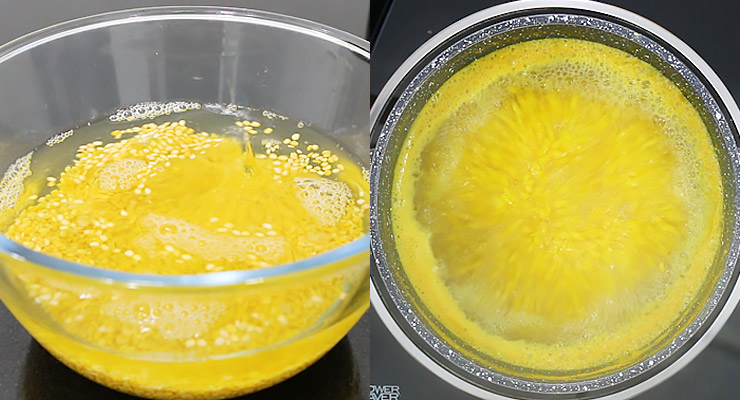
Step 2
Prepare tamarind water by heating water with tamarind.
Dissolve it and strain. Keep tamarind water for later.
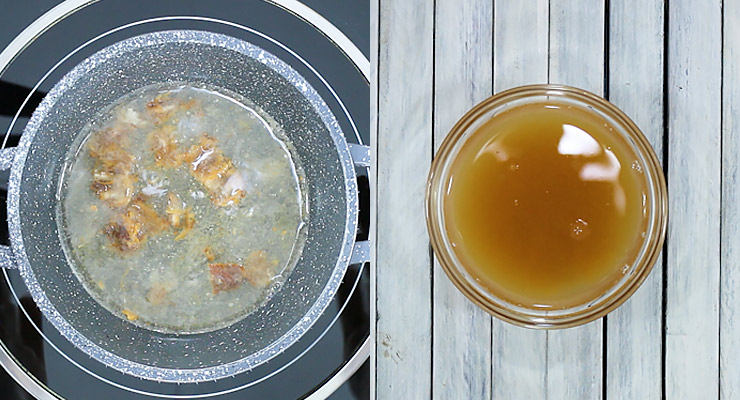
Step 3
Prepare vegetables.
Cut off ends and/or skin. Cut vegetables small, and slice onion, dice tomato, and slit open green chili.
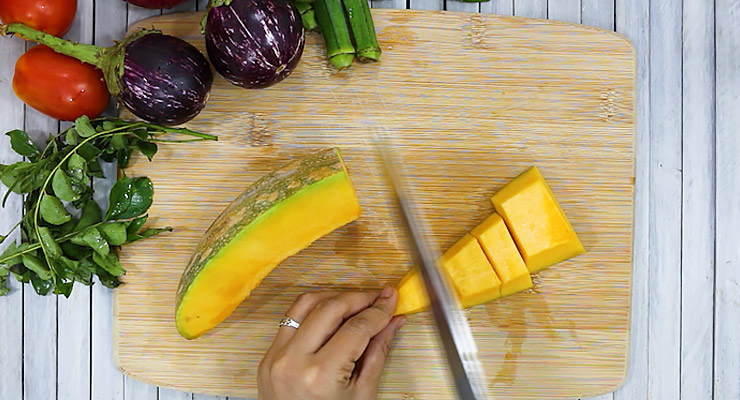
Step 4
Heat oil and temper spices.
Stir in onion, ginger garlic, and season with red chilli powder and coriander powder.

Step 5
Stir in veggies, mix up and sauté.
Add tomatoes and salt. Cover to cook until veggies soften.
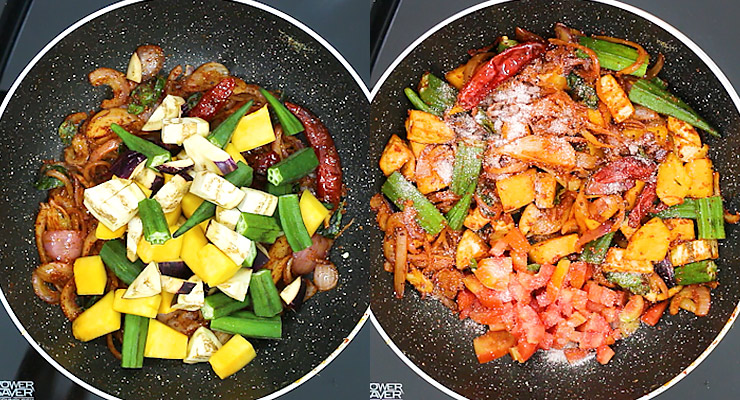
Step 6
Stir in cooked lentils with water, tamarind water, and sambar seasoning.
Mix and finish cooking over a medium flame. The consistency of sambar can be thicker or thin.
Serve up.
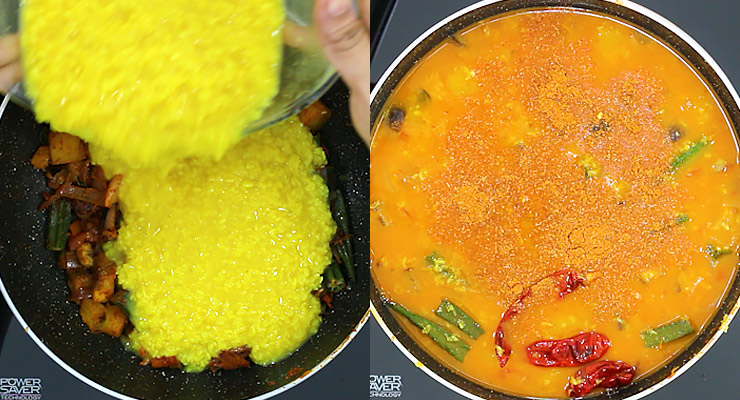
📖 Recipe
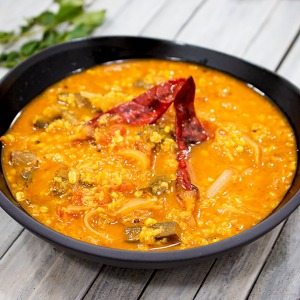
South Indian Sambar Recipe
Ingredients
To boil lentils
- 1 cup Split Pigeon Peas or Moong Dal Lentils *see Notes
- Water to soak
- 4 cups Water to boil
- ½ Teaspon Turmeric Ground
- 1 Tablespoon Salt
For the tamarind water
- 1 Tablespoon Tamarind Paste or Tarmaind pulp
- ½ cup Water
Vegetables
- 3 ounces Pumpkin
- 2 pieces Eggplant aka aubergine
- 6 pieces Okra aka ladyfinger/bhindi
- 1 Onion large
- 1 Tomato medium
- 1-3 piece Green Chili Pepper fresh, optional
To temper spices
- 2 Tablespoon Mustard Oil or Vegetable Oil
- 1 Teaspoon Brown Mustard Seeds
- 12 piece Curry Leaves fresh preferably
- 1-3 piece Red Chili Pepper Kashmiri or any other
- ½ Teaspoon Asafoetida aka Hing
Seasoning and liquids
- ½ Tablespoon Ginger and Garlic Paste *see Notes to substitute
- 1 Tablespoon Red Chili Pepper ground, can be Cayenne too
- 1 Tablespoon Coriander Seeds Ground
- 1 Teaspoon Salt to taste can be skipped
- 2 Tablespoon Sambar Masala Powder
- 2 cups Water
Instructions
To boil lentils
- Place lentils into a bowl and cover with water.1 cup Split Pigeon Peas or Moong Dal Lentils, Water
- Allow lentils to soak overnight for about 8 hours. *see Notes to speed up the process.
- Strain lentils.
- Place lentils with water, salt and turmeric powder in a cooking pot. Cook lentils over a medium to high heat setting soft (This takes at least 40 minutes)4 cups Water, ½ Teaspon Turmeric Ground, 1 Tablespoon Salt
For the tamarind water
- Pour water into a small pan and add the tamarind to it.1 Tablespoon Tamarind Paste, ½ cup Water
- Gradually heat up water and stir/mix in tamarind.
- Take from the heat and wait for the water to cool a bit.
- Mix the tamarind in so that it dissolves. Strain tamarind and collect the tamarind water. Keep aside.
Prepare vegetables
- Cut off pumpkin skin, the green ends from your eggplant and ends from your okra.3 ounces Pumpkin, 2 pieces Eggplant, 6 pieces Okra
- Cut pumpkin and eggplants into smaller cubes and okra into 1-2 inch long pieces.
- Slice onion and dice tomato. Slit open green chili pepper.1 Onion, 1 Tomato, 1-3 piece Green Chili Pepper
To cook your sambar
- Heat up a deep pan like the Indian Kadai (cooking pot or wok will do too) over a medium to high heat setting and pour in oil. Wait for the oil to get hot but don't allow it to smoke.2 Tablespoon Mustard Oil or Vegetable Oil
- Throw in mustard seeds, curry leaves, whole red chili peppers and asafoetida. Temper (stir cook over high heat) for less than a minute or until you can smell the spices unfolding.1 Teaspoon Brown Mustard Seeds, 12 piece Curry Leaves, 1-3 piece Red Chili Pepper, ½ Teaspoon Asafoetida
- Reduce the heat a bit and add the sliced onion. Mix and cook onions tender.
- Stir in ginger and garlic paste. Stir cook for a minute or so.½ Tablespoon Ginger and Garlic Paste
- Season with red chili pepper powder and ground coriander seed powder. Mix and cook over a higher heat setting.1 Tablespoon Red Chili Pepper, 1 Tablespoon Coriander Seeds Ground
- Add your vegetables, pumpkin, eggplant, and okra. Stir cook over high heat until they get a bit soft and they are coated with spices.
- Make some space in your pan and add the diced tomatoes. Season with salt.
- Cover your pan and cook the veggies soft for 5-10 minutes or a medium heat setting.
- Uncover and mix up your vegetables.
- Stir in your cooked lentils. Mix well and keep the heat over medium to high.
- Pour in the water and prepared tamarind water. Season with sambar masala powder. Combine the ingredients.
- Cook your sambar uncovered for at least 20 more minutes. You can leave it to simmer over a slow heat setting and a longer period of time too (the flavors would develope better).
Notes
- We used split moong dal lentils in the video. Most commonly sambar is prepared with dried split pigeon peas but you can of course mix lentils or switch them. You can also add split chana dal (split chickpeas. Dal means lentils in Hindi.
- The lentils need to be soaked or else they will take longer to cook through. But you can speed up the process by skipping soaking and cooking the lentils in a pressure cooker until they are cooked through and soft.
- Turmeric is added to the boiling process to bring out the flavors and to make the colors pop.
- Tamarind paste or pulp can be used. It's easier to use pulp because it's already clear from fibers.
- We choose pumpkin, eggplant, and okra for this sambar recipe because these vegetables are easily available anywhere but you can also add drumstick pods (moringa pod) if you can get it. Carrots can be added too or other vegetables such as turnips, kohlrabi, tender pigeon pea pods.
- Okra normally gets a bit slimy when cut open, which is normal, but due to the addition of an acid (in this case tamarind), the slime will get dissolved.
- We use a large purple onion but if you can get small tender white onions to use that. In Tamil Nadu they use small madras onion (yep that's how they are called).
- Adding green chilis is optional. It adds little heat to the dish.
- Mustard oil adds a nice nutty tangy flavor to your sambar. If you don't get that, you can use regular vegetable oil too, or sunflower or canola oil.
- The spices are tempered which means they are fried in the oil to bring out all the flavors. This is a quick process, so don't over temper them because spices like mustard seeds can turn bitter if you temper them for more than say a minute.
- Don't skip on the spices in this recipe. Each has a purpose and combined they make a sambar great. Asafoetida is a resin spice, it's unique and can't be substituted. Dried red chilis can be skipped but I recommend you use something like Kashmiri chilis, which are not that spicy hot. Thai dry red chilis are hotter than Kashmiri chili. Curry leaves should be used fresh only, but I know how hard it is to get them fresh outside India, so dry ones can be used to.
- Ginger and Garlic paste can be substituted with finely chopped or grated ginger and garlic. The ratio is 2:1 Garlic:Ginger.
- Sambar powder is a blend of ground spices, an Indian masala. It's essential in this recipe. Buy or make it from scratch.
- Reheated sambar curry always tastes better, making this a great meal if you have leftovers.
Equipment
- Medium Pot with Lid or Indian Kadai Pan
Nutrition
🍴 Serving
Sambar can be eaten any time of the day. It can also be reduced further for a thicker curry.
Paul loves it with plain dosa or Papadum (crispy fried dried flatbread).
I enjoy it with freshly baked bread buns, ghee chapati, or plain roti.
If you like idly or vada, then this is your breakfast choice.
It's a sure versatile dish! In fact, I have been making it more common lately as a main course dinner meal.
We serve it with lemon rice or tamarind rice or plain boiled rice.
Sambar is nutritious and healthy, making it a great dinner choice if you are looking to lose weight.
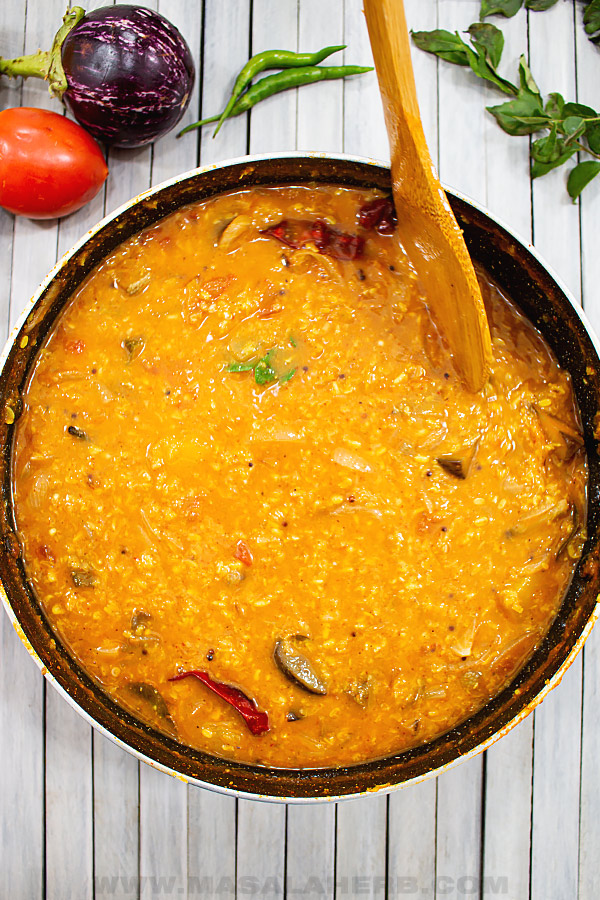
🍱 Storing
Store leftovers in an airtight container in your refrigerator for up to 6-7 days.
It can also be frozen. Just prepare the dish as per instructions and store it in batches in freezer-friendly containers.
To thaw, reheat gradually in the microwave in a microwave container, in the oven in a baking dish over a lower heat setting, or over the stovetop in a cooking pot.
Sambar can be easily added to your meal prepping plan for the week. It's good for days and tastes even better when reheated.
💭 FAQs
You might have cooked your garlic or mustard seeds or other spices too long. Black garlic will turn your sambar bitter, mustard seeds that got tempered for a tad too much can turn your dish also bitter. Also, try avoiding adding bitter-tasting vegetables such as bitter melon (aka karela). Of course, if you don't mind bitter vegetables then the choice is yours. To fix bitter flavors in your sambar, add a teaspoon or two sugar, which helps in balancing out the flavors. Adding a little more tamarind water or spices can do the trick too.
Most folks these days buy sambar masalas. I like the Everest sambar powder. You can also prepare the spice blend from scratch. And please don't try to use curry powder instead of sambar powder, those two are very different from each other. Curry powder is a Western invention and it's not used in India.
If you can't get tamarind, you can also try adding a few drops of lemon or lime juice AFTER the sambar is done cooking (lemon and lime juice flavors change when heated). Another great Indian ingredient substitution would be green raw mango fresh in pieces added or dried added as a powder. In Goa, they would add kokum which is a dried mangosteen/plum fruit variety. Kokum is sour but also adds a purple-pink hue to the dish.
You can shorten the cooking time for your lentils and save gas or electricity by cooking the legumes in a pressure cooker.
Rasam is a south Indian clear soup. It's prepared with other spices and ingredients than sambar. Sambar, on the other hand, might be a thin stew/curry, but it has more consistency and it isn't a clear soup. The flavor differentiate them mainly from each other.
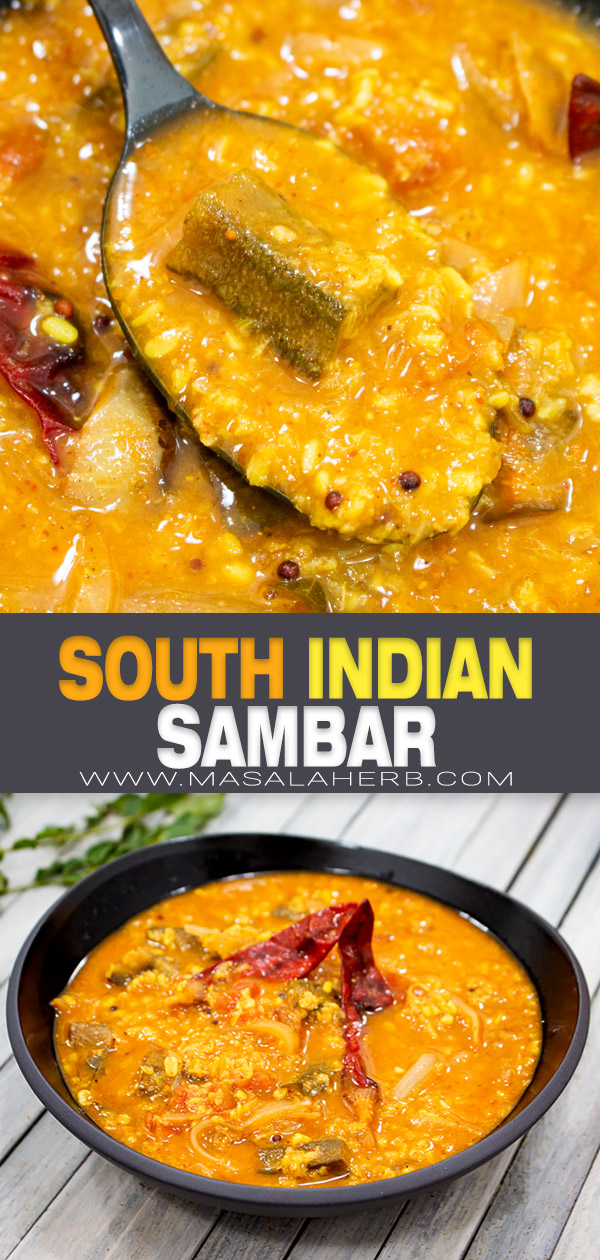

Global Food Recipes
with Spices and Herbs
Free E-Book available for a limited time. Grab yours now and get instantly inspired!
You missed out!

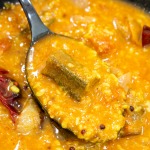
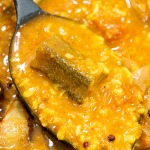
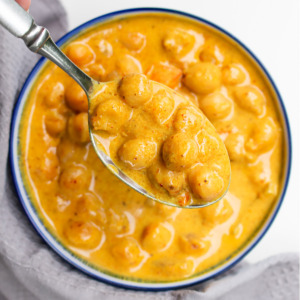
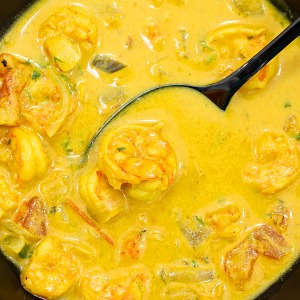

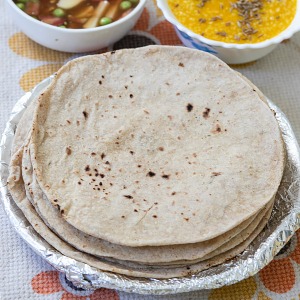
Comments
No Comments